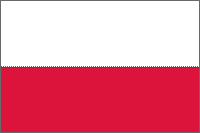Material knowledge when rendering
Material knowledge is crucial in the rendering process to create visually compelling and realistic images in 3D graphics. Understanding how materials interact with light and how to simulate these interactions digitally is fundamental for artists and designers across various fields, including animation, video games, and virtual reality. This article explores the essential aspects of material knowledge needed for effective rendering.
Understanding physical properties of materials
The foundation of rendering realistic materials lies in understanding their physical properties:
- Reflection and refraction: materials can reflect light, like a mirror, or refract it, like glass. The amount and quality of reflection and refraction depend on the material’s surface structure and composition.
- Absorption and scattering: materials absorb some wavelengths of light and scatter others, which determines their color and translucency. For example, a leaf appears green because it absorbs other colors more than green.
- Specularity and roughness: these properties define how shiny or dull a surface appears. A highly specular surface reflects light sharply, like a polished metal, whereas a rough surface scatters light, reducing reflections.
Physically based rendering (PBR)
PBR is a methodology in computer graphics that seeks to mimic the flow of light in the real world using physically accurate shading models. It provides a consistent approach to rendering different materials under various lighting conditions.
- Metalness and roughness: these are key parameters in PBR workflows. Metalness indicates whether a surface is metallic, affecting its reflective properties. Roughness measures the microsurface irregularities that scatter reflected light.
- Albedo: this is the color of a material under neutral lighting, typically seen as the base color in PBR workflows.
Textures and maps
Textures are crucial for adding realism to materials. They can be used to represent color variations, bumps, scratches, and other real-world imperfections.
- Diffuse maps: represent the base color or albedo of a material.
- Normal maps: simulate small surface bumps and dents without changing the actual shape of the 3D objects.
- Specular maps: dictate the specularity across the surface, allowing for varied reflectiveness.
- Displacement maps: alter the actual geometry of surfaces, providing more detail during the rendering process.
Software and tools for material creation
Numerous software tools can aid in the creation and rendering of realistic materials:
- Substance designer and substance painter: these tools are standard for creating and texturing realistic materials in a PBR workflow.
- Quixel suite: integrates with Unreal Engine for rendering and provides access to a vast library of real-world material scans.
- Maya, Blender, and 3ds Max: popular 3D modeling tools that feature robust material editors to fine-tune the appearance of surfaces.
Tips for effective material rendering
Numerous software tools can aid in the creation and rendering of realistic materials:
- Study real-world materials: observing how materials behave in different lighting conditions can provide insights into how to replicate them digitally.
- Layering materials: many real-world surfaces consist of several layers (e.g., a car paint might have a base layer, a metallic flake layer, and a clear coat). Simulating these layers can greatly enhance realism.
- Keep it subtle: real-world surfaces are rarely perfect or uniform. Adding subtle imperfections like scratches, dust, and wear can make synthetic renders more lifelike.
Material knowledge is fundamental in the field of rendering, bridging the gap between digital art and real-world physical appearances. Understanding and implementing these concepts through PBR and texture mapping enhances the realism and appeal of rendered images, contributing to more believable and immersive visual experiences in digital media.
When the realistic depiction of materials is critical to your project, TurboRender is the right solution for your rendering needs. With TurboRender, materials from reflective surfaces to intricate textures are rendered with exceptional clarity and realism, bringing your visualizations closer to life. Moreover, TurboRender supports high-resolution outputs, which are essential for showcasing materials in their truest form, enhancing both the aesthetic appeal and the professional quality of your projects.
Related Posts



Render Your Artwork Online
 Easy setup
Easy setup  24/7 tech support
24/7 tech support 









